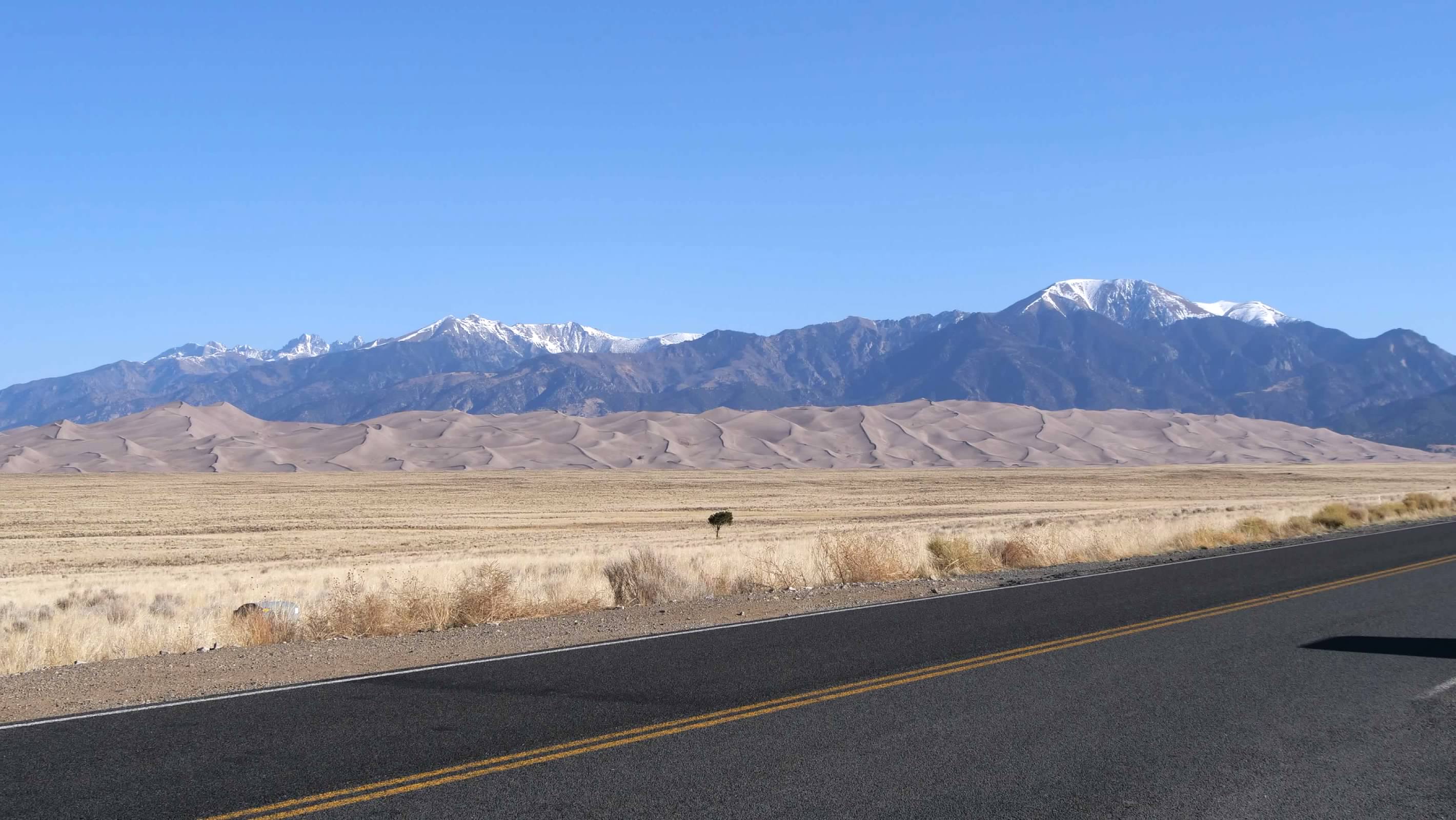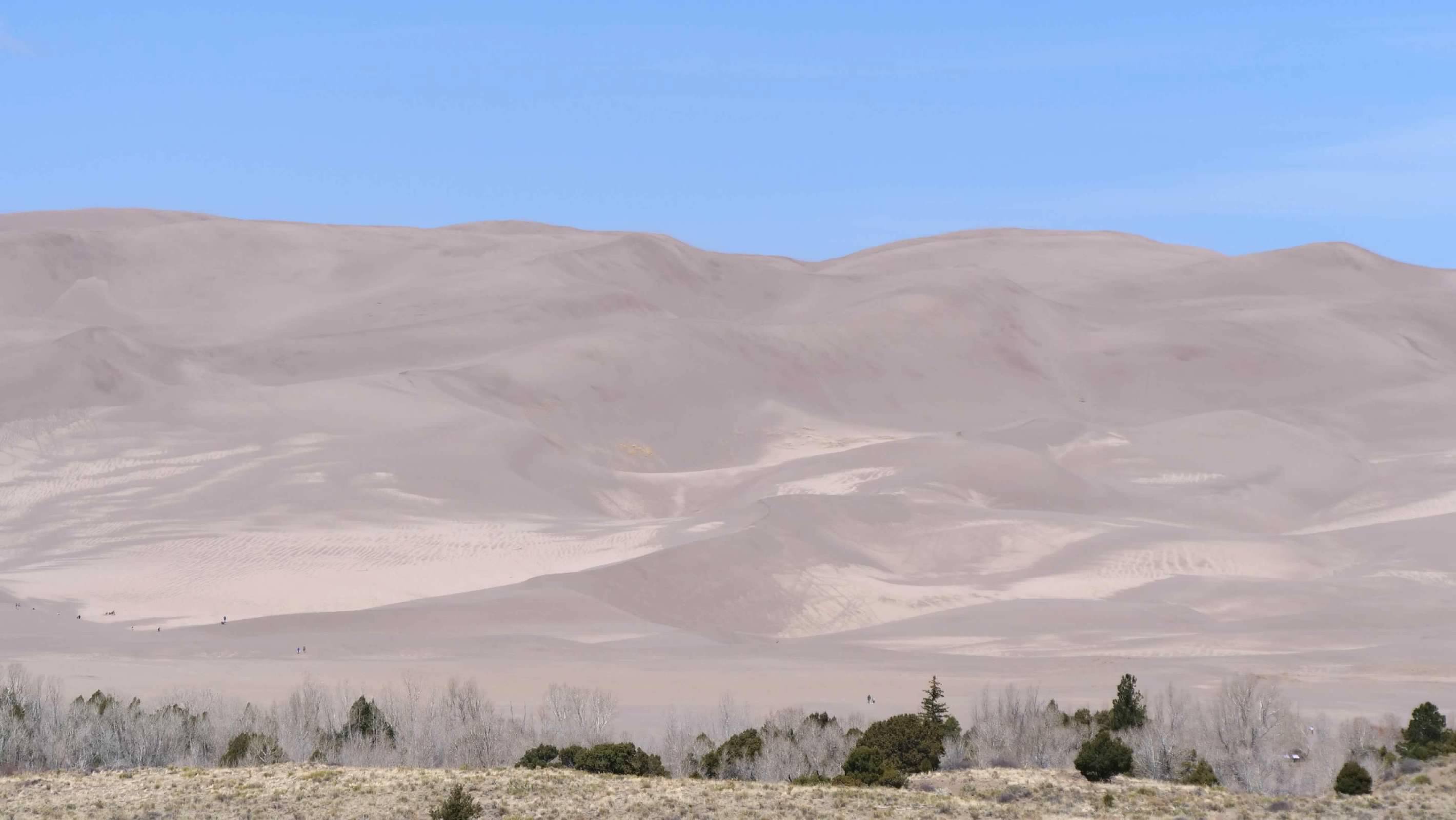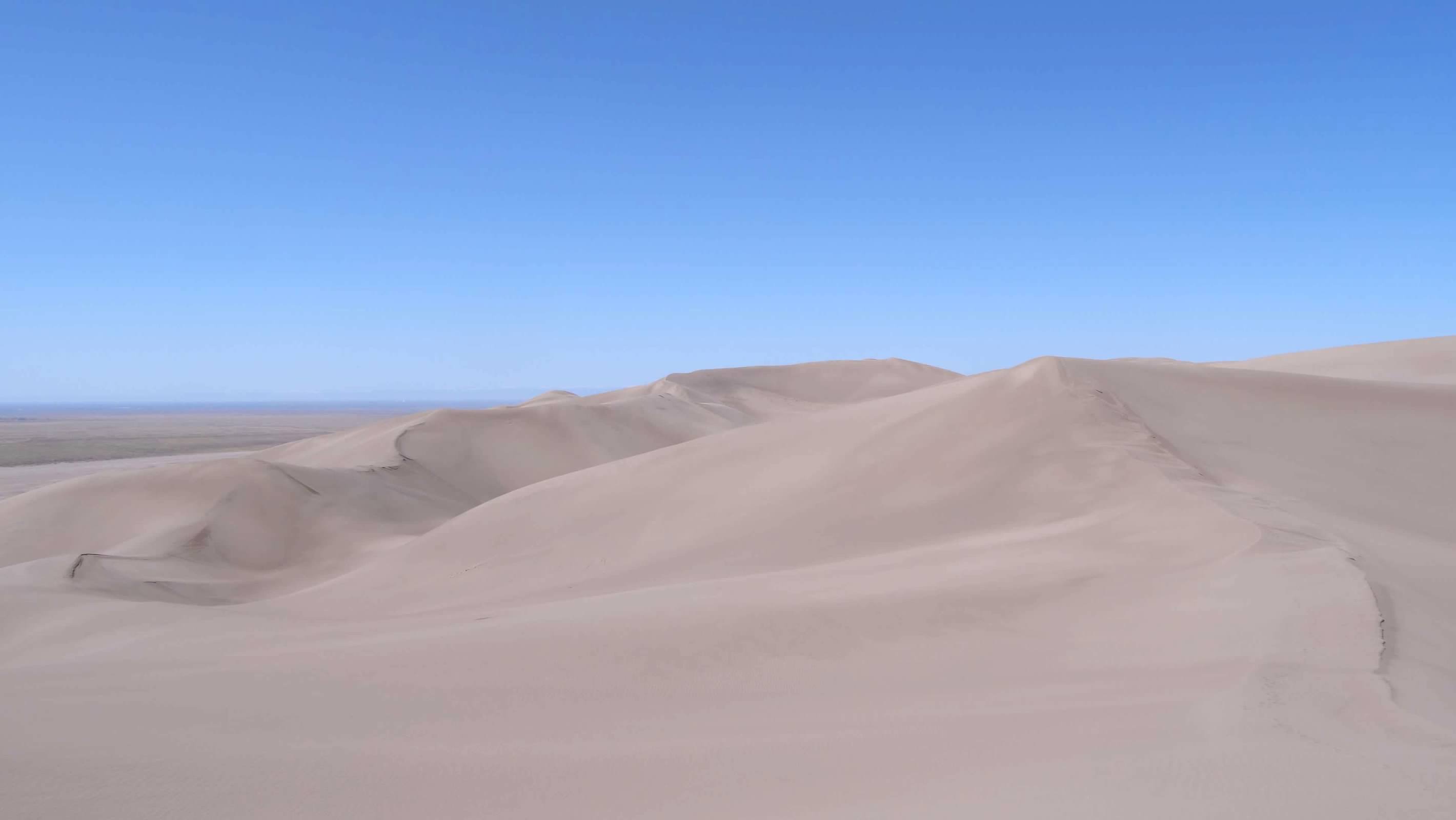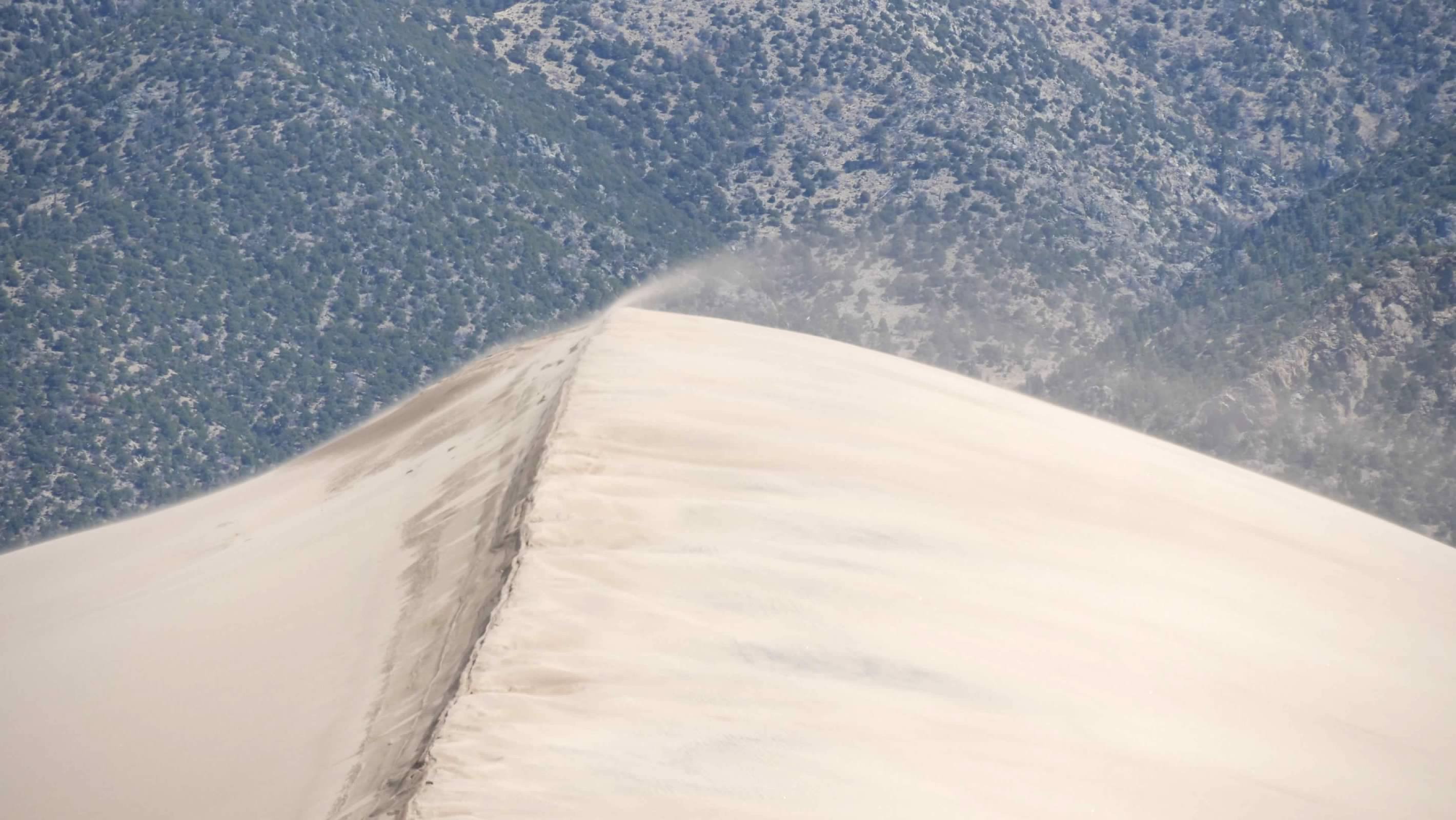Great Sand Dunes
28 April 2025 04:58 pmThe Great Sand Dunes National Park and Preserve has been on my list of places to visit for a long time. I'm sure I considered it for the trip we made back in 2009, but its location is far enough out of the way to make getting there somewhat difficult. Located in the Rio Grande valley in southern Colorado, the star of this park is the 30 square mile field of absolutely massive sand dunes. The dunes are formed with sand blown off the valley floor and trapped as the winds push up and around the Sangre de Cristo Mountains, and are the tallest sand dunes in North America, with the tallest towering about 750 feet tall. But the National Park is more than just the sand dunes. The enabling legislation that created the park includes provisions that extend the park protections underground to include the hydrologic features here, which are essential to how the sand dunes survive. The dune field is bordered by two creeks that fill with snow melt every spring, and which carry sand from the periphery of the field out on to the valley floor, where the water either soaks into the ground or evaporates, leaving the sand to be blown back to the dune field to refresh and maintain the dunes. This cycle is also instrumental in the life cycles of the flora and fauna here as well, all of which is showcased in the impressive visitor's center. We have visited sand dunes elsewhere: Jockey's Ridge State Park on the Outer Banks of North Carolina and White Sands National Park in New Mexico in particular, but as impressive as those were, they simply were not even close to the scale we encountered here. After stopping at the Visitor's Center and learning a little about the park, we ventured out to the sand dunes themselves. As we had entered the park, we met some young ladies (ski instructors from Steamboat, Colorado, as it turned out!) who were on their way to try snowboarding on the dunes. Now, as we walked across the dry creek bed towards the dunes, we could just make them out on some of the lower dunes. They were off to the right of where most of the visitors were climbing in the dunes, and we chose to head in their direction. We climbed up close to where they were and watched them for a little while. The amount of friction between the snowboard and the sand was significantly higher than it would be for snow, and it clearly made it harder to slide. They struggled a little, but managed to get some clean runs in, but they finished and left long before we finished our hike.
We have visited sand dunes elsewhere: Jockey's Ridge State Park on the Outer Banks of North Carolina and White Sands National Park in New Mexico in particular, but as impressive as those were, they simply were not even close to the scale we encountered here. After stopping at the Visitor's Center and learning a little about the park, we ventured out to the sand dunes themselves. As we had entered the park, we met some young ladies (ski instructors from Steamboat, Colorado, as it turned out!) who were on their way to try snowboarding on the dunes. Now, as we walked across the dry creek bed towards the dunes, we could just make them out on some of the lower dunes. They were off to the right of where most of the visitors were climbing in the dunes, and we chose to head in their direction. We climbed up close to where they were and watched them for a little while. The amount of friction between the snowboard and the sand was significantly higher than it would be for snow, and it clearly made it harder to slide. They struggled a little, but managed to get some clean runs in, but they finished and left long before we finished our hike. We would spend a solid two hours hiking in the sand dunes, climbing from the peak of one dune to the next, trying to see further into the dune field. We never made it to the tallest dunes along the front edge of the field, but we did get to the top of a couple that had to be nearly 500 feet tall, which did allow us a glimpse further back into the dune field. We found that the sand was firmest and easiest to walk in if we stayed near ridge lines, and much less stable if we tried to walk out on the face of the dune. But even the relatively easier conditions on the ridges wasn't exactly easy, especially at this altitude (the base of the dunes is about 7,500 feet above sea level!). Additionally, sand was constantly filling our shoes, and the wind blowing sand at us from what felt like every direction. But the struggle was worth it for the views. Because we chose not to follow the majority of the people into the dunes, but set off in a different direction, we eventually found ourselves far enough away from everyone else that it almost felt like we were all alone in this totally alien landscape. And even when we did get a glimpse of others, they were little more than dots on the distant dunes.
We would spend a solid two hours hiking in the sand dunes, climbing from the peak of one dune to the next, trying to see further into the dune field. We never made it to the tallest dunes along the front edge of the field, but we did get to the top of a couple that had to be nearly 500 feet tall, which did allow us a glimpse further back into the dune field. We found that the sand was firmest and easiest to walk in if we stayed near ridge lines, and much less stable if we tried to walk out on the face of the dune. But even the relatively easier conditions on the ridges wasn't exactly easy, especially at this altitude (the base of the dunes is about 7,500 feet above sea level!). Additionally, sand was constantly filling our shoes, and the wind blowing sand at us from what felt like every direction. But the struggle was worth it for the views. Because we chose not to follow the majority of the people into the dunes, but set off in a different direction, we eventually found ourselves far enough away from everyone else that it almost felt like we were all alone in this totally alien landscape. And even when we did get a glimpse of others, they were little more than dots on the distant dunes.



 But every footstep we took away from the parking lot was another we would have to retrace to return, and eventually we realized that we would need to turn around before we were to tired to make it back. We made a large loop through the dunes, eventually coming back to the low ridge we had begun our climb on and backtracking from there down to the creek bed. By the time we were retracing our original path, the wind had largely erased our footprints, a reminder of how little impact our presence here would have on the appearance of the dunes.
But every footstep we took away from the parking lot was another we would have to retrace to return, and eventually we realized that we would need to turn around before we were to tired to make it back. We made a large loop through the dunes, eventually coming back to the low ridge we had begun our climb on and backtracking from there down to the creek bed. By the time we were retracing our original path, the wind had largely erased our footprints, a reminder of how little impact our presence here would have on the appearance of the dunes.